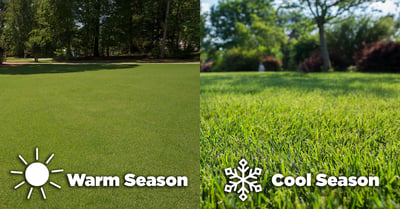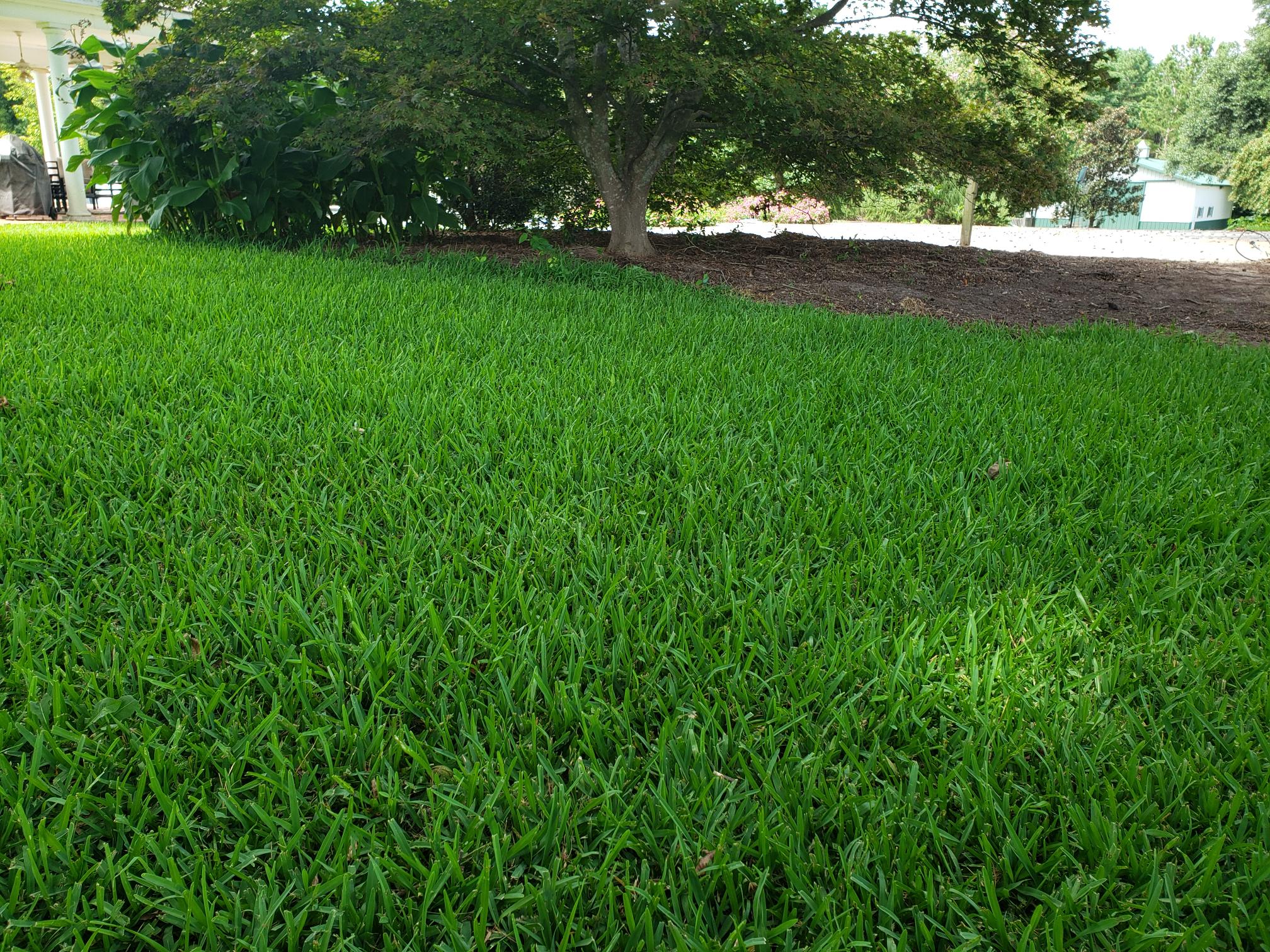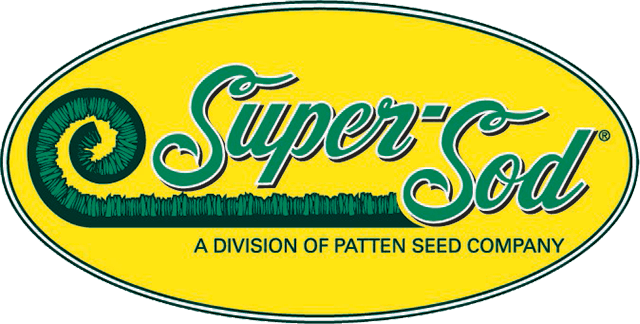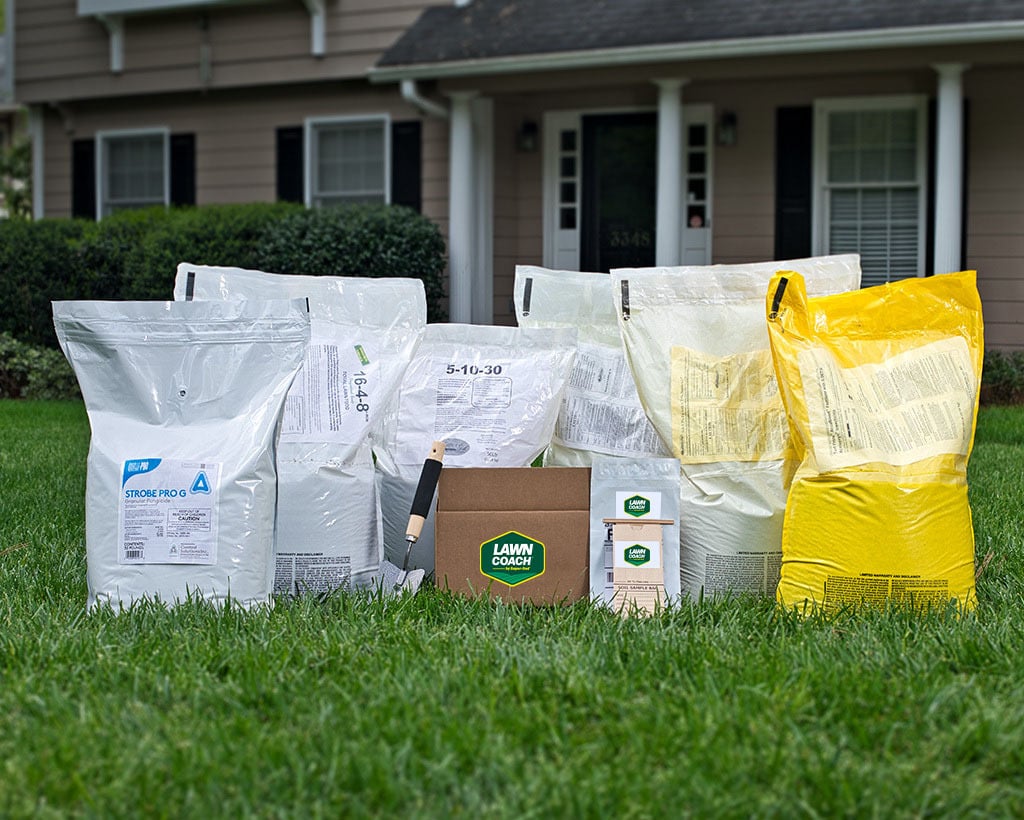

7 Reasons Why We Don’t Sell St. Augustine Grass in the Southeast

Facts provided by our COO Ben Copeland Jr., with blog written by Jorian Santiago and Nina Johnson. Super-Sod expert teamwork in action.
Well, grab a cup of coffee or preferred beverage and keep reading.
St. Augustine grass, mostly known for its beautiful, lush green look, was the favorite sod for more than a few of our customers. Unfortunately, over 25% of the customers who purchased it called back within the first year reporting issues. That gorgeous St. Augustine grass is susceptible to several diseases and pests and, like the pervasive chinch bugs, those problems were taking over their lawns.
At Super-Sod, our mission is to provide customers with a healthy lawn that lasts. We realized that we could not meet our goal for our customers with St Augustine. While it is a good solution for some areas, St. Augustine is not optimal for the areas we serve within Alabama, Georgia, South Carolina, North Carolina, and Tennessee.
St. Augustine: The Basics
Let’s go back to basics and look at some of the pros and cons of St. Augustine grass:
Advantages:
- Moderate levels of maintenance and mowing
- Creates a thick, carpet-like surface that competes well against weeds and other grasses
- Does well in full sun and also tolerates shade
- Tolerates heat and humidity – ideal for Florida, Texas, and other southern states with sub-tropical to tropical weather
- Well-suited for coastal areas due to tolerance of saltwater
Disadvantages:
- Not hardy to cold weather so it is restricted to areas with mild winters
- Vulnerable to drought and requires heavy supplemental irrigation
- High susceptibility to diseases and pests
- Weak roots that don't help the lawn withstand and recover from issues such as drought and pests
- Needs extra fertilization throughout the first three months - not your typical set it and forget it type of sod
- Want to play football with the kids? Think again, as St. Augustine does not handle high traffic as well as some other sod types
Now let’s discuss the major disadvantage of St. Augustine – it is very vulnerable to disease and pests. Here are a few examples:
1. Take-All: An Aptly Named Fungus
A new disease called “Take-All Root Rot” (TARR) became much more common 10 years ago. One of its favorite prey? St. Augustine grass.
Take-All is a highly destructive fungus that causes root rot. While the fungus occurs naturally below ground, high rainfall and stressed turfgrass caused by poor lawn maintenance trigger the disease and then the symptoms begin to show above-ground. First you will notice irregular yellow leaves or light-green patches followed by thinning and dying grass. Once those warnings start to appear, the damage has already been done underground!
Unfortunately, there is no effective chemical control for Take-All Root Rot in home lawns. The best option is to prevent stress in the grass with good turf management: watering, fertilizing, compost-topdressing, mowing height and frequency. The other major cause is heavy rain which cannot be controlled.
The prevalence of Take-All in St. Augustine lawns and the lack of treatment was one of the major factors in our decision not to take the chance of putting the lawns of our customers in jeopardy.
Want to learn more about Take-All Root Rot? Follow this link to UGA Extension. For concerns about this or any other disease in your lawn, contact your local County Extension office for help with diagnosis.
2. Winter Kill
St. Augustine is not tolerant of cold temperatures, and as a result, it is susceptible to Winter Kill. A variety of climate conditions lead up to Winter Kill, including: low temperatures, ice and snow on the grass, wind, and moisture levels. These conditions don't happen frequently in the right combination, but when they do, grass is damaged at the cellular level and the end result is lawns that fail to green up in the spring.
Remember the 2014 ice and snowstorm in Atlanta, nicknamed "Snowpocalypse." There were extreme winter storm conditions across much of the South that year and spring 2014 saw many warm-season lawns that did not recover. St. Augustine, being not very winter hardy, was particularly hard-hit.
This St. Augustine lawn failed to green up after suffering from Winter Kill in 2014.
3. St. Augustine Grass Decline (SAD)
SAD is a virus that affects St. Augustine grass. The early symptoms are mottling of the grass blades, followed by a general yellowing of the lawn. Grass can have mild signs for a couple of years, but once it progresses, the grass will thin and start to be overcome by weeds.
Mowers and other lawn equipment can spread the SAD virus. While some varieties of St. Augustine are resistant to the disease, there is no available chemical cure.
4. Chinch Bugs
Chinch bugs are tiny bugs that cause major damage to your lawn. And they really are tiny – just 1/5” long. Chinch bugs literally suck the life out of your grass, and St. Augustine is their favorite! They insert their mouth parts into grass blades and feed on the juices. While feeding, they release a toxin into the blade that causes it to yellow and wilt even after the bugs leave.
Signs of chinch bug damage can look a lot like drought or other grass diseases like Brown Patch (see below). Look for irregular patches of yellowing or dead grass and sometimes you will see they are surrounded by a halo of yellow grass. These islands of dying grass tend to grow and then merge as insect numbers increase.
The best way to determine if your lawn has chinch bugs is to do a float test with a tin can as described by UGA in their article on Chinch Bugs (helpful photos of Chinch Bugs are included in that article.)
The threshold for treating your lawn is generally 20 or more chinch bugs per square foot. If you have chinch bugs, check with your local County Extension office for an effective control in your area. The good news is that there are options for chemical control of chinch bugs.
5. Brown Patch
Another very destructive fungus that affects all types of grass, including St. Augustine, is Brown Patch. A summer disease triggered by warm temperatures and high humidity causes brown, round areas of grass that start small and are sometimes shaped like a doughnut. Then it spreads rapidly.
Preventative measures include not watering your grass late in the day and not over-fertilizing your grass with high levels of nitrogen. If rainy conditions are frequently causing your grass blades to stay wet overnight, you can apply preventative applications of fungicide at 14 to 30 day intervals. And if Brown Patch does occur in your lawn, you can treat it with curative applications of fungicide.
A large area of Brown Patch in what was once a lush St. Augustine lawn.
6. Gray Leaf Spot
Gray Leaf Spot is a disease that develops on St. Augustine that is kept wet too long - this is one reason why early morning watering is the best practice. Look for oval/round, tan spots on the blades that are surrounded by a brown border. These spots turn gray and become fuzzy with spores. NC State Extension thoroughly explains this problem in their post on Gray Leaf Spot in Turf.
Gray leaf spot on a blade of grass.
7. Lethal Viral Necrosis
This new disease appeared in Florida, and we read on landscapemanagement.net that it's two viruses combined to make a new disease. The article didn't name it, only referring to it as "lethal viral necrosis," so that's what we're going with for now. Lawns yellow in fall and worsen through winter, taking 3 to 5 years to die completely. So far, it's only found in Florida. Sanitary precautions, such as cleaning a mower before entering a new yard, are recommended to help curb the disease because, as of yet, no other treatments have been determined.
Prioritizing Only Quality Sod
We strive to keep our customers happy; that’s the main reason we are in business. Given the susceptibility of St. Augustine to various problems, including those described above, selling it in the Southeast is something we could not continue to do in good conscience. Our priority will always be to provide the best quality options in your area for your lawn.
Better Alternatives to St. Augustine
If you are looking for an alternative to St. Augustine grass, we recommend that you consider TifTuf Bermuda or Zoysiagrasses.
Advantages of TifTuf Bermudagrass:
- Generally resistant to most pests and diseases
- TifTuf is much more winter-hardy – tolerating extreme cold and heat
- An attractive grass that grows thick and dense, which helps to suppress weeds
- Strong, deep-growing roots that help TifTuf establish quickly and withstand droughts
- Legendary drought tolerance: once TifTuf is established (in only a few weeks), you can turn your irrigation off
- It thrives in full sun, but can tolerate several hours of shade per day
- Quick recovery from damage via strong shoot and root growth: stolons (runners) and rhizomes (underground runners) regrow to repair the lawn from damage
Advantages of Zoysiagrasses:
- Generally resistant to most pests and diseases
- Much more winter-hardy: Zoysias thrive in the heat and many, like Zeon and Zenith, thrive in cold climates
- Zoysias grow the thickest and densest of any turf, helping to suppress weeds
- Zoysias have good drought resilience, going dormant in prolonged droughts and greening up again when rains return
- Zoysias thrive in full sun, but are tolerant of some shade (Zeon is our most shade tolerant)
- Zenith Zoysia is the only zoysia available as both sod and seed, but we offer other Zoysias from sod
- Reliable recovery from damage via strong shoot and root growth: stolons (runners) and rhizomes (underground runners) regrow to repair the lawn from damage
Thank you for reading! We hope you now understand why we chose to discontinue St. Augustine sod in the Southeast, and we hope that you will consider the better turf alternatives.
Do you have any questions or comments? Please leave them below, we'd love to hear from you.
.png?width=400&name=WHY%20WE%20DON%E2%80%99T%20SELL%20ST_%20AUGUSTINE%20GRASS%20ANYMORE%20(1).png)




